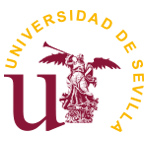Motivos por los que los estudiantes universitarios no practican deporte
Keywords:
Deporte universitario, Motivos de abandono, Deporte para todos,Abstract
Este estudio examinó las causas por las que los jóvenes universitarios no practican deporte. Los participantes fueron estudiantes de la Universidad de Oviedo (N = 1.916). Los resultados mostraron que aquellos que manifiestan motivos de carácter extrínseco para explicar su desvinculación activa del deporte, son estudiantes que, a pesar de todo, siguen estando interesados y predispuestos a practicar (no-practica de carácter reluctante, o también de una no-práctica contra el corazón, con mayores posibilidades de ser captados o reintegrados al deporte). Mientras que los que aducen motivos de carácter intrínseco son universitarios que han dejado de estar interesados por el deporte, les ha dejado de gustar, les resulta aburrido, etc. (no-practica por descontento, con menores posibilidades de ser captados o reincorporados). Observamos que estas dos direcciones se relacionan con el género, la percepción de las repercusiones de la práctica deporte en los estudios y la importancia que asignan al deporte en la vida universitaria. Finalmente se discuten sus implicaciones.
Downloads
References
CAGIGAL, J.M. (1981). ¡Oh deporte! (Anatomia de un gigante). Valladolid: Miñon.
CECCHINI, J.A. (1998). La práctica físico-deportiva en la Universidad de Oviedo: análisis y alternativas. Universidad de Oviedo. Oviedo.
CECCHINI, J.A.; ECHEVARRIA, L.M.; MÉNDEZ, A. (2003). Intensidad de la motivación hacia el deporte en la edad escolar. Universidad de Oviedo. Oviedo.
CECCHINI, J.A.; MÉNDEZ, A.; CONTRERAS, O. (2005). Motivos de abandono de la práctica del deporte juvenil. Universidad de Castilla –La Mancha. Cuenca.
GOULD, D. (1987). «Understanding attrition in children ́s sport», en GOULD, D. y WEISS, M.R. (Eds.). Advances in pediatric sport sciences. (61-86) Champaign, Illinois: Human Kinetics.
GUILLET, E. (2000). Facteurs et processus de l’abandon sportif: du rôle de l’entraîneur à l’impact des normes culturelles. Une recherche longitudinale en handball féminin. Tesis doctoral. Grenoble: Université Joseph Fourier.
HU, L. y BENTLER, P.M. (1999). Cutoff criteria for fit indexes in covariance structure analysis: Conventional criteria versus new alternatives. Structural Equation Modeling, 6, 1-55.
KLINT, K.A. y WEISS, M. R. (1986). Dropping in and dropping out: participation motives of current and former youth gymnasts. Canadian Journal of Applied Sport Sciences, 11 (2), 106-114.
LIZALDE, E. (1993). Objetivos y programas de los servicios de actividad física. III Jornadas de Actividad Física y Universidad. Server d ́Actividad Física. Universidad Autónoma de Barcelona.
NTOUMANIS, N. (2001). A self-determination approach to the understanding of motivation in physical education. British Journal of Educational Psychology, 71, 225- 242.
PARIS, F. (1996). El deporte en la Universidad Española. Consejo Superior de Deportes. Madrid.
PETLICHKOFF, L. M. (1982). Motives interscholastic athletes have for participation and reasons for discontinued involment in school sponsored sports. Master de tesis, Michigan State University.
PUIG I BARATA, M. (1993). Necesidades y estructuración de plantillas en los servicios de actividad física. Organigrama. III Jornadas de Actividad Física y Universidad. Server d ́Actividad Física. Universidad Autónoma de Barcelona.
SARRAZIN, P. (2002). L’abandon sportif: Causes et processus. Comunicación presentada en el IIIème Colloque Médico Technique du Ski Alpin. Octubre 2002.
SARRAZIN, P. ; GUILLET, E. (2001) «Mais pourquoi ne se réinscrivent-ils plus! Variables et processus de l’abandon sportif» en F. CURY, P. y SARRAZIN (Eds.), Capítulo 8. Théories de la motivation et pratiques sportives: État des recherches, pp. 223-254. Paris, PUF.
STANDAGE, M. ; DUDA J.L. ; NTOUMANIS, N. (2003). Predicting motivational regulations in physical education: the interplay between dispositional goal orientations, motivational climate and perceived competence. Journal of Sports Sciences, 21, 631–647.
Downloads
How to Cite
Issue
Section
License
Authors who publish in this journal accept the following conditions:
Authors conserve the copyrights and cede to the journal the right for first publication, with the work registered with the attribution licence of Creative Commons, which allows third parties to use the published work as long as they mention the authorship and the first publication in this journal.
The authors may make other independent and additional contractual agreements for the non-exclusive distribution of the version of the article published in this journal (e.g. include it an institutional repository or publish it in a book) as long as it clearly indicates that the work was first published in this journal.
Authors are allowed and indeed recommended to publish their work on the internet (for example on institutional or personal pages) before and during the revision and publication process, because it can lead to productive exchanges and greater and faster dissemination of the published work (see The Effect of Open Access).
Accepted 2016-03-04
- Abstract 3270
- PDF (Español (España)) 1743










